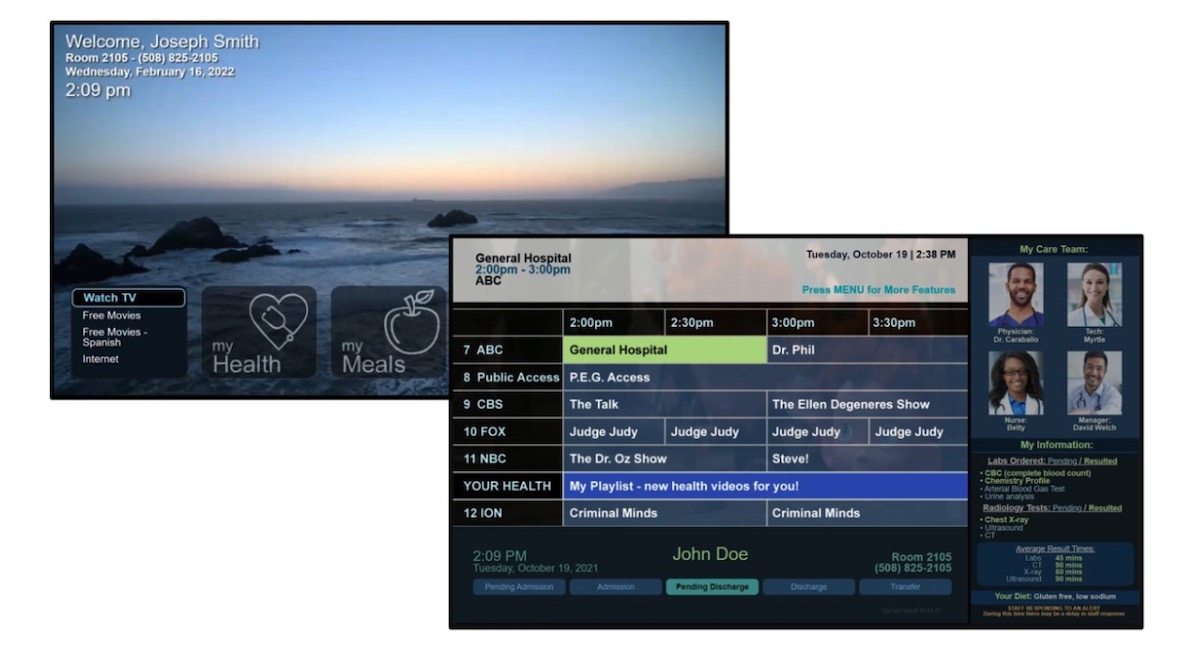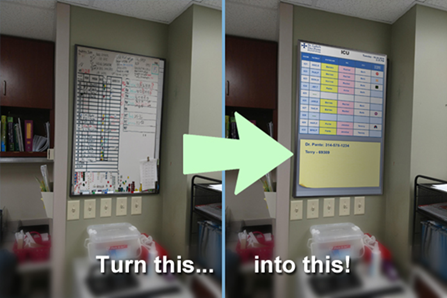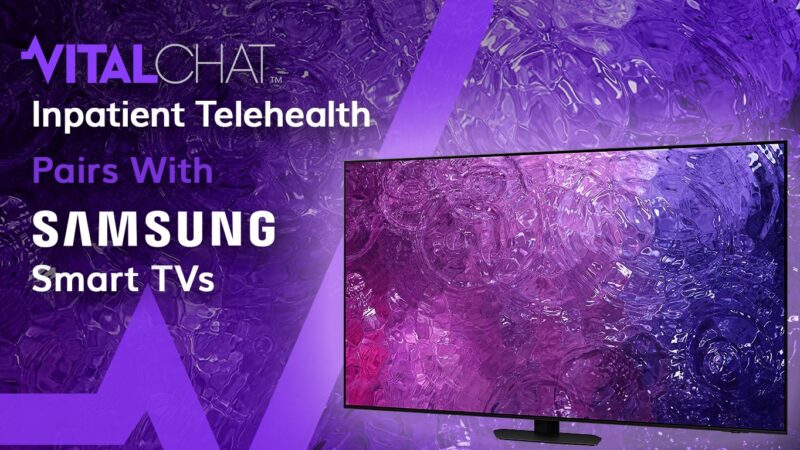
LG, Samsung Announce Tech Partnerships Targeting Screens For Health Care Environments
October 13, 2023 by Dave Haynes
The two biggest pro display manufacturers active in the North American market made announcements this week that signal their interest in chasing the complicated but big scale opportunity of patient communications in health care environments.
Both LG and Samsung made announcements Thursday about partnerships with technology companies that are specifically focused on health care – enabling solutions that expand the use of screens in patient rooms and elsewhere on hospital and clinic floors.
LG’s collaboration with Aceso has the most direct ties to digital signage – a new data-driven platform dubbed Pane of Glass. LG describes it as “a personalized view of patient-specific clinical or care team information, entertainment, education and more — all delivered directly to the patient room TV.”
The solution is keyed, in part, to the benefits of all-in-one smart displays. “Aceso successfully leveraged the superior processing power of LG’s Smart Hospital TVs to host and run the new Pane of Glass platform natively, simplifying system design and lowering total costs,” says LG Business Solutions USA’s Healthcare Director Tom Mottlau. “Since no additional hardware is required, the displays can be mounted anywhere there is a power outlet and then connect to the network either wirelessly or through a hard-wired connection.”
From PR:
Aceso’s patented platform consumes and presents data from various clinical, AI and operational source systems, and seamlessly integrates virtual care and remote monitoring services.
“Aceso’s Pane of Glass allows care providers to improve the in-room patient experience while simplifying workflow and backend operations, and maximizing the use of available patient data,” says Aceso President and Co-Founder Geoff Fiedler. “Our open platform simplifies data and technology integration, while centrally managing all connected displays across multiple buildings or locations. The simplicity of this combined solution is a cost-effective way to use the LG Smart Hospital TV as the endpoint to deliver a wide range of content, data and services.”
As providers continue to enhance patient experiences and the use of telehealth services accelerates, Aceso sees a growing need for permanent in-room displays that patients and providers can rely on 24/7. “Always on” screens are critical for around the clock care. They allow for special features such as the ability to let a patient know a staff member is entering the room, complete with a photo and their role. Organizations looking to deploy the new Pane of Glass platform can also use existing non-smart displays through the addition of an LG set top box.
The collaboration partners also suggest the blended solution and streamlined nature of smart displays is budget-friendly:
One aspect of the new software that’s sure to excite hospital administrators and planners is the cost savings it can offer. While many organizations still use mobile carts to provide video displays on demand, total costs that can exceed $10,000 per unit greatly limit deployment and they require front-line staff support. Aceso says that in many situations patient rooms can be outfitted with a new Pane of Glass-powered display for less than $2,000, greatly reducing the cost per room while expanding use and eliminating the need to constantly move, clean and store expensive portable devices.
$10,000 for a mobile AV cart seems a bit of a reach unless it has Gucci branding and pushed around by a super-model, but I can buy into the proposition that a smart display in a fixed position will certainly be less costly and more reliable, with fewer cables to work free when moved around.
The Aceso Pane of Glass on LG Hospital TVs also enables a range of room configurations through features such as screen splitting, where content is split between two in-room displays. One such setup could dedicate a display for media viewing and entertainment while a second display, perhaps a touch screen, shows patient information or serves as an active whiteboard.
In-room patient communications, particularly when tied in to hospital patient and management systems, makes a ton of sense. Modern health care is seriously digitized, but in active care areas there are still a lot of whiteboards, marker pens and clipboards in use. The challenges with health care are very long sales cycles and bureaucracy. I doubt many hospital deals get closed in a couple of meetings and minimal paperwork.

The Samsung announcement is also keyed to TVs, but quite different.
Vitalchat has paired its telehealth solution with Samsung’s healthcare displays to enable in-room patient monitoring and virtual visits by caregivers.
“Our telehealth technology is designed to meet the needs of modern healthcare environments today and tomorrow,” says Vitalchat CEO Alan Pitt, MD. “Partnering with Samsung enables us to have a greater impact in combatting some of the biggest healthcare challenges related to the patient experience, safety and workforce stabilization.”

Unlike many competitive solutions, Vitalchat leverages artificial intelligence to offer industry-leading and industry-first features, including:
- SmartView: Patented software that continuously scans patient rooms for movement using in-room video. Cameras monitor for irregular movement and voice cues, providing 24/7, at-a-glance monitoring of patient activities, staff rounding and visitors;
- MultiView: Configurable dashboard with an intuitive interface enables providers to view up to 100 patient rooms simultaneously across a department, facility or location. Remote alerts help nurses get to patients in need faster;
- Bandwidth Conservation: Patented architecture conserves data transmitted over a network while enabling video to be activated only upon an alert, minimizing network requirements by approximately 20-fold compared to video streaming;
- Hardware Agnostic: Solutions seamlessly integrate with any existing technology stack, further reducing overhead costs for hospitals.
The Vitalchat app leverages the Tizen platform within the Samsung healthcare TV, which enables hospitals and other clinical environments to use a lower-cost camera and still generate the same, high-quality audio and video without bogging down the network.
“Our partnership with Vitalchat illustrates our commitment to driving better healthcare by connecting patients and families with their care team,” explains Chris Mertens, Vice President of U.S. Sales, B2B Displays, Samsung Electronics America. “The pairing of Samsung healthcare grade displays and Vitalchat’s SmartView and MultiView software ensures patients are being monitored 24/7, as an exemplified safeguard for patient safety and quickly attending to a patient’s needs.”
The Samsung partnership doesn’t specifically reference patient communications, but that could conceivably be added. On e tech companies are in as trusted vendors, the path of least resistance for procurement and IT teams is to ask existing suppliers if they can also do things like, say, digital signage.
I think health care is a massive opportunity because of the scale it offers, and the clear benefits of timely, relevant communications. But as noted earlier, the selling process is probably going to be long and the nature of health care likely means a LOT of meetings and a LOT of paperwork.



LG has upper hand here with complete line of thin clients supporting SSO.